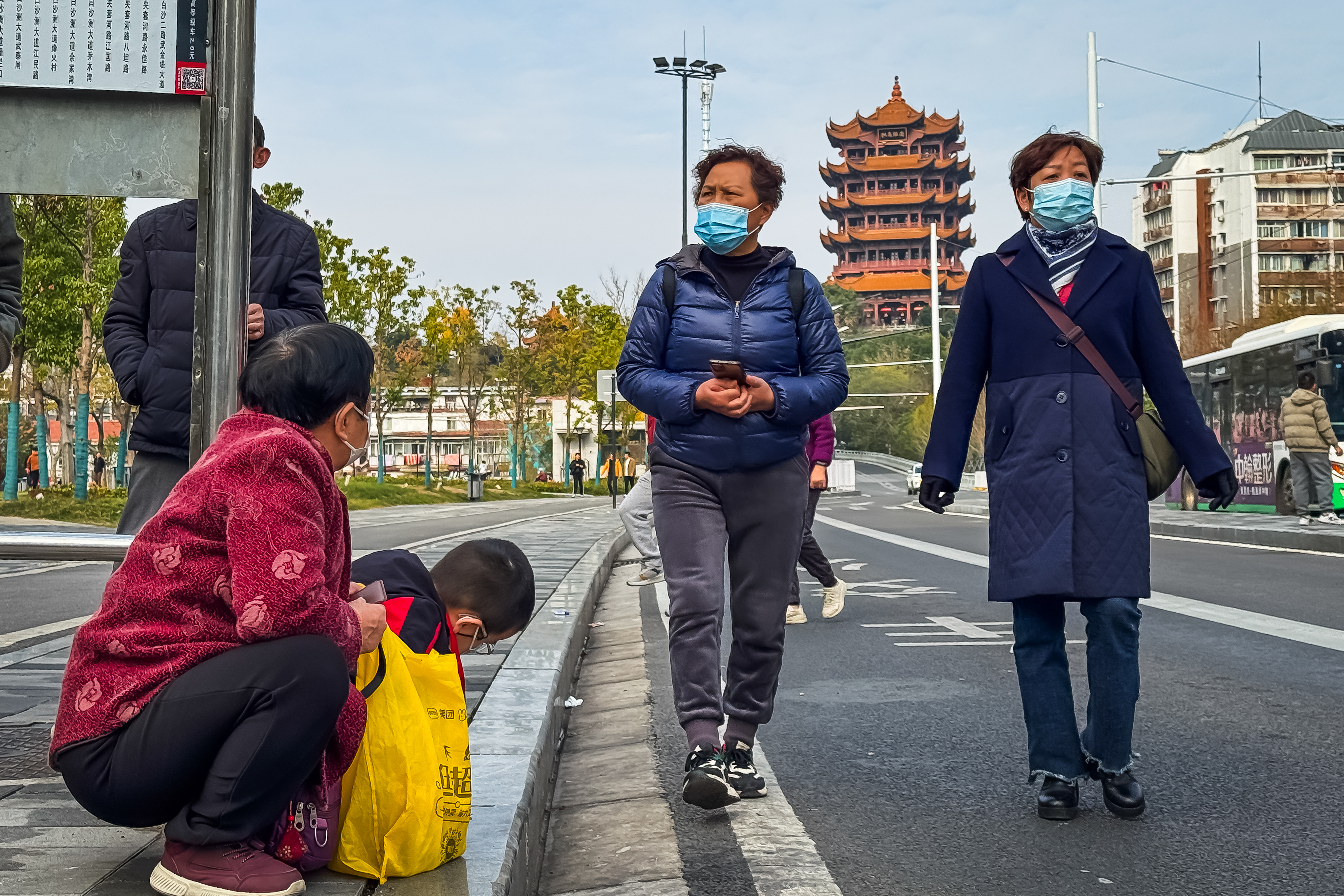Fashion
The 10 Themes That Will Define the Fashion Agenda in the Year Ahead

For yet another year, the most common sentiment among fashion leaders for 2025 was “uncertainty,” according to the BoF-McKinsey State of Fashion 2025 Executive Survey. Just 20 percent of respondents expect conditions to improve from 2024, 41 percent expect conditions to remain the same and 39 percent expect them to worsen.
Like last year, there is a divide among executive expectations, but reasons for concern have changed:
- Fashion leaders are concerned about consumer sentiment, as the economic outlook remains in flux and sluggish across markets. Seven out of 10 fashion leaders cited consumer confidence as the top risk for 2025.
- Executives remain concerned about how geopolitical instability and economic volatility will impact the fashion landscape in the year ahead. Given changing dynamics and conflicts in the geopolitical landscape we expect these risks to stay top of mind.
- Meanwhile, inflation has been falling further down the list of executives’ concerns. Around the world, central banks are lowering interest rates as inflation cools. In this year’s survey, executives were nearly half as likely to cite inflation as a key risk compared last year.

The fashion industry will post low single-digit growth in 2025
Despite these continued challenges, McKinsey Fashion Growth Forecasts predicts the global fashion market to post low single-digit growth in 2025, reflecting a structural deceleration following the post-pandemic boom. This deceleration, coupled with relatively muted consumer confidence, will force brands to prioritise capturing market share, rather than reaping the rewards of the outsized market growth of the last few years.

The macroeconomic climate will continue to challenge growth across regions
Non-luxury:
Europe
+2-4%
— year-on-year market growth in 2025
- GDP growth is expected to increase slightly to 1.2 percent in 2025, as rising real wages are anticipated to boost consumption.
- Economic uncertainty and geopolitical concerns are keeping personal savings rates high, reaching a three-year peak in June 2024.
- Appetite to spend is ticking up slightly as disposable personal incomes rise and inflation falls.
- Recovery across the continent will be mixed; sluggish growth is still expected in key economies such as Germany and the UK.
US
+3-4%
— year-on-year market growth in 2025
- GDP growth is expected to slow slightly to 2.2 percent in 2025, while the Federal Reserve aims to continue rate cuts in 2025 to boost consumption.
- Consumer purchasing power is rising, buoyed by a strong stock market and property sector. In 2024, wage growth outpaced inflation, while the personal savings rate dipped below pre-pandemic levels at 6 percent.
China
+2-4%
— year-on-year market growth in 2025
- China is experiencing a structural slowdown. While GDP growth is still outpacing global growth, it is expected to decelerate to 4.5 percent amid a property market crisis and record-high debt-to-GDP of 288 percent.
- In August 2024, consumer confidence fell to just above 2022 record lows. It remains uncertain whether government measures will be sufficient to drive a meaningful boost in sentiment in 2025.
Luxury:
Europe
+1-3%
— year-on-year market growth in 2025
- Domestic luxury demand is expected to be low, affected by consumer caution in Europe.
- As of May 2024, tax-free shopping in continental Europe had recovered to 138 percent of pre-pandemic sales levels — although Chinese tourist spend was 59 percent of 2019 levels.
- Looking ahead, foreign arrivals to Europe are expected to grow by 8 percent per year from 2024 to 2026, expected to drive market growth.
US
+3-5%
— year-on-year market growth in 2025
- Aspirational middle- and upper-class consumers’ ability to spend on luxury is increasing as a result of decreasing inflation, higher disposable income and a strong real estate market.
- The growing ultra-high-net-worth individual (UHNWI) population is also driving demand: 8 percent growth in 2023 and an expected 5 percent compound annual growth rate (CAGR) from 2023 through 2028.
China
-3-0%
— year-on-year market growth in 2025
- Domestic luxury growth is expected to pick up slightly in late 2025 thanks to high savings rates (household savings rate at 32 percent), and the rise of new wealth centres, such as Shenzhen and Wuhan.
- Domestic growth will remain below historical levels due to a rebound in international travel and slower growth in UHNWIs (expected 8 percent CAGR from 2023 to 2028 vs 13 percent from 2019 to 2023).
Executives are continuing to focus on sales growth in the year ahead
Nearly three out of four fashion leaders are prioritising sales growth over cost improvements, a slight uptick from the 2024 survey.
However, the drivers of growth are shifting. In the last few years, volume growth has slowed, or even declined, in regions such as the US and Asia-Pacific. Now, in a reversal of recent years, leaders anticipate volumes, rather than price, will fuel growth.
- Compared to the prior year, the number of executives that expect to increase prices dropped 17 percentage points.
- Nearly two thirds of executives expect volume growth in 2025, mostly in the low single digits.
- Consumers are tired of price increases. This is particularly true for middle- or lower-income shoppers, who are more sensitive to price hikes. As a result, brands anticipate having less pricing power, in line with executives’ uncertainty over consumer appetite to spend.

Fashion leaders identify new opportunities for 2025
In pursuit of differentiation:
At the top of executives’ priorities this year is finding ways to differentiate, whether through new designs, customer experiences or finding new customer niches.
Localisation is one lever fashion brands are leveraging. Half of executives plan to localise their go-to-market model and value proposition, especially through pricing, fulfilment channels and assortment. This will help connect with customers in promising emerging markets for growth such as India.
65 percent of executives also plan to alter their assortments to include a variety of options across price points. In 2025, it will be important to appeal to a wide range of consumers to gain share while balancing tight control of inventory.
Reduced focus on cost improvements:
While executives continue to prioritise advancements in AI and digital innovation, they are less focused on actively mitigating costs. Over 85 percent expect their cost of goods and selling, general and administrative costs to grow at a low single-digit rate.
Sustainability takes a backseat:
In the past two years, sustainability was a top opportunity for industry executives. This year, in an environment where growth may be constrained, the focus on sustainability has faded into the background, as executives prioritise other opportunities, such as differentiating their brands and offering new designs to capture market share.

The 10 fashion industry themes that will set the agenda in 2025:
1. Trade Reconfigured
Global trade is shifting as major economies diversify and source from countries where they have more political alignment. This will accelerate in the fashion industry in 2025 due to rising costs, evolving trade policies and sustainability targets. As a result, fashion brands are likely to double down on diversifying their sourcing footprint in Asia and lay the foundations for nearshoring.
2. Asia’s New Growth Engines
China’s economic deceleration, changing consumer preferences and the return of international travel are making growth in the country highly challenging, leading international fashion brands to look to other Asian markets. India will be a focus, particularly for high-street players, while Japan’s luxury boom is expected to continue into 2025, fuelled by strong international and domestic spend.
3. Discovery Reinvented
Fashion shoppers are overwhelmed with choice, which negatively impacts their engagement and conversion rates with brands. However, a new era of brand and product discovery is on the horizon, underpinned by AI-powered curation across content and search.
4. Silver Spenders
Fashion brands have typically focused on youth, but in 2025 they may struggle to grow sales from younger shoppers alone. The “Silver Generation” aged over 50 represents a growing population with a high share of global spend. Brands that engage these previously overlooked shoppers while creating inter-generational appeal will unlock incremental growth.
5. Value Shift
Macroeconomic pressures and rising prices have driven fashion shoppers to adopt cost-conscious behaviours. This is expected to persist, even as some economies begin showing signs of recovery. This dynamic is fuelling growth in segments with strong value-for-money perception, such as resale, off-price and dupes, among others. To capture customers’ share of wallet, brands will need to prove their value.
6. The Human Side of Sales
Differentiating the in-store experience is key to reigniting demand for in-person shopping. Brands can achieve that by empowering their store associates to reach their full potential, as sales staff have a central and valuable role to play in connecting with customers. The benefits will be sizeable, since customer and employee experience are inextricably linked.
7. Marketplaces Disrupted
Following a tumultuous period for luxury e-commerce platforms, online non-luxury marketplaces are facing challenges of their own. Share prices have dropped as much as 98 percent since Covid-19 peaks due to existential business model challenges and disruptions. Non-luxury marketplaces globally must carve out a clear role in the fashion ecosystem to survive.
8. Sportswear Showdown
Challenger brands are forecast to generate over half of the sportswear segment’s economic profit in 2024, up from 20 percent in 2020. This means the battle between challengers and incumbents in the growing sportswear market will likely intensify. To gain market share, brands will need to develop innovative products and use the right ambassadors and channels to activate unique brand stories.
9. Inventory Excellence
Inventory remains a challenge for the industry with both excess stock and stocks-outs impacting brands. In 2025, margin pressures and sustainability regulation will place greater emphasis on end-to-end planning excellence, with brands increasingly adopting tech tools and adjusting their operating model to support agile supply chains.
10. The Sustainability Collective
Fragmentation and complexity across the fashion value chain, coupled with consumer reluctance to pay for sustainable products, are inherent barriers to reaching sustainability goals. But with decarbonisation efforts falling short of targets and the climate crisis accelerating, inaction is not an option. The fashion sector must act collectively to drive impact.
This article first appeared in The State of Fashion 2025, an in-depth report on the global fashion industry, co-published by BoF and McKinsey & Company.










